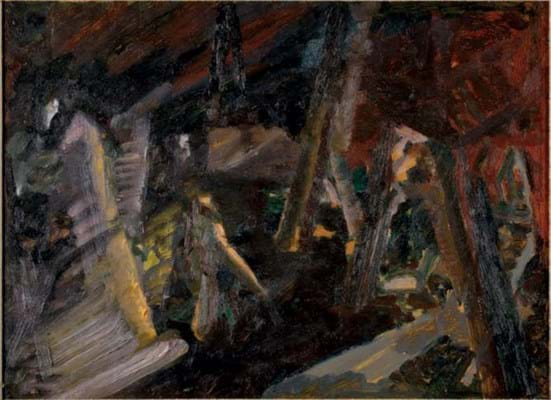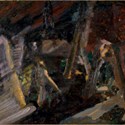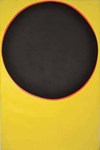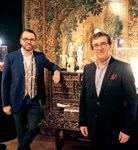Bomberg was the leading figure of the Borough Group and the Borough Bottega in the 1940s and ’50s. His works are defined by expressionistic aesthetic, limited colour palette and use of angular forms.
In Beyond Borough, taking place from May 9-June 2, the Albemarle Street gallery will take a look at the works of a generation of artists both directly and indirectly affected by the British modern painter’s style.
The show follows Waterhouse & Dodd’s 2015 David Bomberg and his students at the Borough Polytechnic, a stand-out success by the gallery’s reckoning, which sold around 30 works and more than 300 catalogues.
Now, for the new exhibition, the gallery’s Jamie Anderson tells ATG that it is “expanding the brief”, incorporating figures both intimately and tangentially connected with the painter. Among the 12 artists included are, for instance, Bomberg’s regular pupil Dorothy Mead, his short-term student Sheila Fell and ‘Kitchen Sink School’ member Edward Middleditch, who never worked with Bomberg but produced a series of stylistically sympathetic works in the 1960s.
“Last time we included as many artists as possible,” Anderson says.
“But it was the contacts we made then that helped us get the works by artists we weren’t able to incorporate before.”
Artist and mother
Among those whose works the gallery gained access to as a result of the previous show, is Edna Mann (1926-85). She took instruction from Bomberg early in her career and later abandoned her scholarship at the Royal College of Art, becoming a founding member of the Borough Group. Ultimately, however, she was ostracised when Bomberg discovered she was pregnant. A woman, he believed, could not be both an artist and a mother.
“You don’t have to understand postmodernism to appreciate these works
Mann continued to paint following her rejection from the group but she hardly ever exhibited her works and today her paintings are rarely seen.
When her surviving relatives heard of the last Waterhouse & Dodd show, however, the gallery was able to tap into what Anderson calls “quite a significant holding” of her paintings.
Included in Beyond Borough are several examples of works in this artist’s dark, highly abstracted style.
He adds that he’s confident these works will continue to appeal thanks to the emotional resonance they seem to have with modern audiences.
“Bomberg’s expressionist works differ from other paintings of the 1950s because there’s none of that detachment that comes with Pop or minimalism. You don’t have to, say, understand post-modernism to appreciate these works,” he says. “In the last exhibition there was a slightly younger demographic, which might be down to the complete lack of irony. These younger collectors might be jaded by irony in art and might have responded on an emotional level.”
The events surrounding the 60th anniversary of Bomberg’s death this year will probably bolster interest in the artist. As well as Waterhouse & Dodd’s 2015 exhibition there was last year’s show at Towner Gallery, David Bomberg: A Sense of Place, and still to come is a retrospective of the artist’s work, starting this year at Pallant House Gallery (October 21, 2017-February 18, 2018).
Waterhouse & Dodd, for its part, will continue to delve into the work of Bomberg and his associates, a successful corner of the market for this London gallery.




















